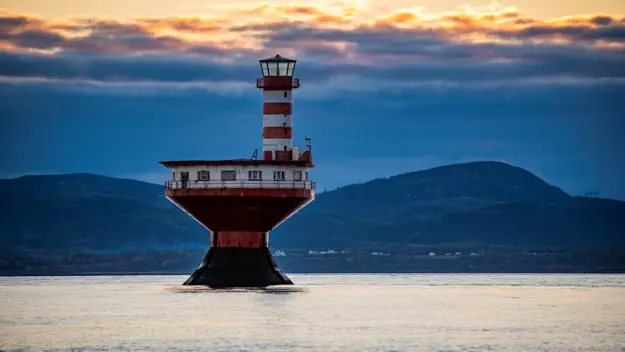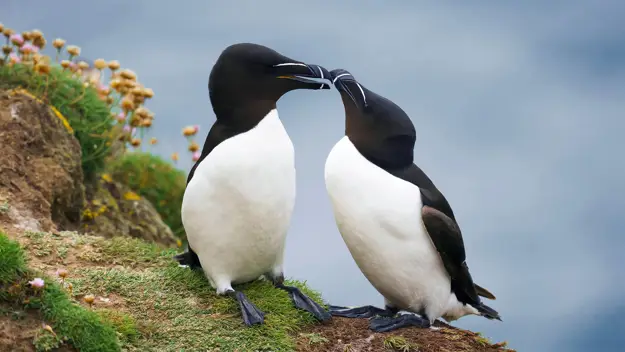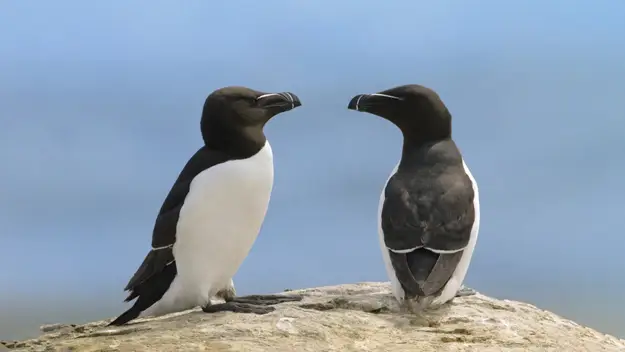Who are the belugas?
The beluga, also known as the white whale or white porpoise, is an iconic cetacean of the cold waters of the Arctic Ocean and the St. Lawrence River. Recognizable by its white colour, it is also known for its rounded head and forehead, and its permanent smile, which gives it a particularly friendly appearance.
The name ‘’beluga’’ (bielyi or belyï in Russian) is a word borrowed from Russian meaning ‘’white’’. Their white skin contrasts sharply with the marine environment. However, they are not born with a white colour, but rather gray or brown, which fades gradually, becoming paler over the years. Another special feature of the beluga’s white skin is its ability to camouflage itself in its environment, particularly in ice and snow, providing effective protection against some of their predators (such as the polar bears).
Their skin colour changes until they reach maturity (between 10 and 16 years old). They are born with a brown colour that changes over the years. From their first year, they will show a bluish colour, which they will wear until their fourth year. After that, their coat turns gray, until it reaches white at maturity.
Belugas are famous for their complex and varied vocalizations. Their way of communicating includes an impressive range of whistles, clicks, and grunts. These sounds are not only used for communication but also for navigating in the dark waters of the St. Lawrence, where visibility is limited. Researchers continue to study these underwater symphonies to understand their meaning and utility in the lives of those nicknamed ‘sea canaries.’

Belugas have a strong sense of community. They live in social groups of related members. Groups of males and groups of females with their calves live in the Marine Park. Social interaction between belugas is complex, with behaviours such as play and cooperative hunting.
Belugas in the St. Lawrence River: A Unique Species
Diving into the world of belugas offers a unique perspective on the marine life of the St. Lawrence River. These enigmatic creatures, with their distinctive white coats and complex social behaviour, are an essential part of the Saguenay-St-Lawrence Marine Park ecosystem.
Unlike other cetacean species that migrate over long distances, such as the humpback whale, for example, the beluga population in the St. Lawrence has made its home in the river’s waters all year round. In fact, they make up the southernmost beluga population in the world.
Interested in learning more? Our naturalist guides on board of our cruises will be able to provide you with more explanations about these exceptional animals.




